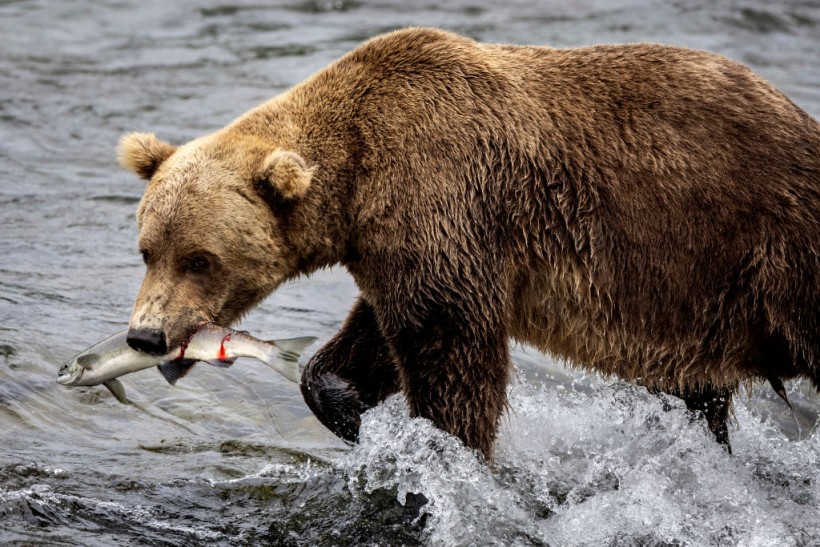The latest report showed that salmon was found spawning in the Arctic Rives. Researchers explained that climate change could be a factor that affects the salmon's habitats.
Climate change can have long-term impact the species of salmons and other aquatic animals. Fishes, including the coral reef system, are sensitive to changes and temperatures due to the warming of oceans.
The challenges brought by climate change can affect many aquatic species' habitat, survival and spawning areas.
Salmon in the Arctic Rivers: What are the Causes?

A photo of salmon on August 12, 2023 at Brooks Falls, Alaska. Researchers discovered that salmon emerged in Arctic rivers, which could be likely due to the impacts of climate change. Climate change can affect the habitats of aquatic species.
Understanding the effects of climate change on salmon species is vital to prevent population declines, especially on the West Coast.
Recently, reports showed the alarming impacts of ocean warming on salmons in the Pacific Northwest.
According to NOAA, climate change can influence the habitat of cold-water and fresh-water aquatic species and their food sources.
In the Arctic rivers, climate change can shape the spawning areas of salmons. Researchers at the University of Alaska Fairbank discovered about 100 chum salmon in the rivers in Alaska.
When the water becomes warmer, it can push salmon to migrate or swim more to look for potential food sources. The emergence of salmon is also a bioindicator of the ecosystem's health.
Meanwhile, the report highlighted that different species, like sea lions, seabirds and plankton, could also affect the salmon population.
Associate Professor Peter Westley, the project lead, explained that the habitat changes in salmon push them to move north. Westly is also a researcher at the UAF. The project discovered that chum salmons emerged in the Itkillik and Anaktuvuk rivers.
Rehabilitating the nutrient flow and habitat restorations are crucial for salmon survival amidst the threats of climate change and increasing temperatures.
The researchers will also analyze the spawning of salmon in the Arctic rivers and the potential success of their reproduction in the area.
Also Read: Alarming Florida Keys Coral Bleaching: Warm Waters, Rise of Temperatures Impact Corals
Arctic river threats: How does it impact the water?
The Arctic River has many aquatic species and ecosystems, including bears, moose, beavers, and Arctic foxes. As a result, the temperature change can significantly impact them.
However, the Arctic Rivers have suffered from different threats:
- Plastic pollution
- The introduction of invasive species
- Water pollution
- Plastic pollution
- Overfishing.
In a recent report, researchers showed the pervasive plastic pollution in the Arctic Rivers. Plastics and microplastics can impact aquatic ecosystems.
The increasing problem of plastic can harm the food sources of aquatic animals. Exposure to microplastics in fish can also harm other animals and human health.
Researchers explained that plastic pollution also came from wastewater, landfills, households, agricultural areas and industrial industries.
As a result, the mitigation of plastics is essential in the Arctic Ocean to protect marine biodiversity and ecosystems. The reduction of plastic can avoid the devastating impacts on wildlife.
Related Article: Pond Turtles Conservation: Restoration Efforts To Save Species from Brink of Extinction in Washington State, U.S.
For more similar, don't forget to follow Nature World News.
© 2024 NatureWorldNews.com All rights reserved. Do not reproduce without permission.


![Tsunami Hazard Zones: New US Map Shows Places at Risk of Flooding and Tsunamis Amid Rising Sea Levels [NOAA]](https://1471793142.rsc.cdn77.org/data/thumbs/full/70325/280/157/50/40/tsunami-hazard-zones-new-us-map-shows-places-at-risk-of-flooding-and-tsunamis-amid-rising-sea-levels-noaa.jpg)


